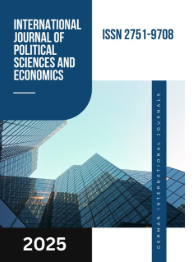SPECIFICS OF PREGNANCY AND CHILDBIRTH IN OVERWEIGHT WOMEN
DOI:
https://doi.org/10.55640/Keywords:
maternal obesity, pregnancy complications, gestational diabetes, cesarean delivery, perinatal risks, antenatal care, labor management.Abstract
Overweight and obesity are increasingly prevalent among women of reproductive age and represent significant clinical challenges during pregnancy and childbirth. Excess maternal weight is associated with numerous complications, including gestational diabetes mellitus, hypertensive disorders, labor dystocia, cesarean section, macrosomia, and neonatal morbidity. This article explores the physiological, obstetric, and perinatal implications of maternal overweight, the underlying pathophysiological mechanisms, and current best practices in antenatal management, intrapartum care, and postpartum follow-up. By addressing these issues holistically, clinicians can better individualize care, mitigate risks, and support healthy maternal and neonatal outcomes.
References
1.Catalano, P. M., & Shankar, K. (2017). Obesity and pregnancy: Mechanisms of short term and long term adverse consequences for mother and child. BMJ, 356, j1. https://doi.org/10.1136/bmj.j1
2.Kominiarek, M. A., & Peaceman, A. M. (2017). Gestational weight gain. American Journal of Obstetrics and Gynecology, 217(6), 642–651. https://doi.org/10.1016/j.ajog.2017.05.040
3.Mottola, M. F., & Artal, R. (2016). Role of exercise in reducing gestational diabetes mellitus. Clinical Obstetrics and Gynecology, 59(3), 620–628. https://doi.org/10.1097/GRF.0000000000000219
4.Rasmussen, K. M., & Yaktine, A. L. (Eds.). (2009). Weight Gain During Pregnancy: Reexamining the Guidelines. Institute of Medicine and National Research Council. Washington, DC: The National Academies Press.
Downloads
Published
Issue
Section
License

This work is licensed under a Creative Commons Attribution 4.0 International License.
Authors retain the copyright of their manuscripts, and all Open Access articles are disseminated under the terms of the Creative Commons Attribution License 4.0 (CC-BY), which licenses unrestricted use, distribution, and reproduction in any medium, provided that the original work is appropriately cited. The use of general descriptive names, trade names, trademarks, and so forth in this publication, even if not specifically identified, does not imply that these names are not protected by the relevant laws and regulations.







